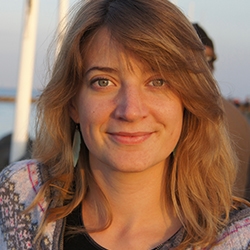Two BRIC researchers receive Lundbeck grants for “bold projects with the potential to produce new knowledge in the field of neuroscience”
Assistant professor Ninna Struck Rossen and Assistant professor Sophia Julia Häfner are two of 29 researchers in DK who have received funding from the Lundbeck Foundation LF Experiments research programme for high-risk projects. The grants enable recipients to work on the audacious hypotheses they wish to test – either to produce new basic science or to develop new therapies for the benefit of neuroscience now or in the longer term.
- "I am delighted that BRIC houses ambitious and curious researchers who are able to think outside the box, and formulate bold research questions. At BRIC, it is an ambition to support a vibrant and creative research environment where researchers dare to ask difficult questions and the fact that two of the 29 Lundbeck grants have been given to BRIC researchers tells me that we are doing something right. A big congratualation to both Ninna and Sophia!" Anders Lund, Director
 Assistant professor Sophia Julia Häfner, Lund Group
Assistant professor Sophia Julia Häfner, Lund Group
What is your project about?
Brain development requires the utmost precision for the generation of hundreds of neural types and relies on an extremely tight control of protein production. The ribosome stands at the core of translation,and although a highly complex machinery, it was long assumed to be without intrinsic regulatory capacity. This dogma has recently been challenged by evidence of ribosome diversity. Variations can stem from composition or modification of the protein and RNA (rRNA) components. However, proof for a physiological impact of this heterogeneity is lacking. I have recently found that the pattern of rRNA 2’-O-methylation modifications changes significantly during mouse brain development. In addition, the removal of a single methylation in human embryonic stem cells radically changes cell fate from stemness to neural progenitors. Here, I propose to take a leap and ask the big question: are rRNA modifications pivotal during brain development? Towards this, I will remove specific methylations and assess the impact on mouse embryo brain development and human brain organoids. If successful, this would be the first proof that ribosome modifications can fine-tune cell fate and influence brain development.
What is the high risk nature of the project?
I truly believe that this project has the potential to break new ground and radically change our vision on how one of the most central molecular machines is regulated, and participates in the establishment complex organs. However, given the novelty of the paradigm, sparse experimental proof, and the gap between in vitro and in vivo studies, this is a daring hypothesis. Developing such a conceptually novel research project represents a high-risk venture, as only labour-intense experiments will be able to validate it.
What does it mean to you to receive this grant?
It is a great innovation that organizations have started over the recent years to invest rather into out-of-the-box ideas than into famous names and piles of Nature papers. Our team is currently trying to overthrow a long-established paradigm stating that ribosomes don’t have their say in translation control - a risky endeavour, especially when you decide in addition to leave the safety of the Petri dish monolayer culture to go full animal model and brain organoids. I count myself as very lucky to have received support for “unorthodox research” from the Villum velux foundation a few years ago, and now from Lundbeck - without these grants, it would be impossible to do real fundamental research into the unknown.
 Assistant professor Ninna Struck Rossen, Erler Lab
Assistant professor Ninna Struck Rossen, Erler Lab
What is your project about?
The goal of the project is to develop a vascularized micro-fluidic brain assay for in vitro testing. The brain is protected by a blood brain barrier (BBB) that is difficult for larger molecules to penetrate, and has not been modelled in vitro. Drugs intended to treat neurological diseases must therefore be able to penetrate the BBB at clinically-effective levels. Researchers currently use animal experimentation and endothelial cell cultures to assess drugs’ ability to penetrate the BBB, but both methods suffers from drawbacks: animal experimentation does not permit real time observation of drug effects, and barriers created using endothelial cell cultures are weaker than the BBB, and therefore have limited utility. The goal of this project is to develop an in vitro model that captures the essential cell populations and architecture of the brain and the strength of the BBB. If successful, this project could improve the tools used to study drugs’ penetration of the BBB by creating new types of brain-on-a-chip from brain organoids and explants, each with vasculature and a BBB immediately adjacent to brain tissue. These brains-on-a-chip would enable researchers to study complex, living brain tissue in real time with control of intravenous delivery of drugs and circulating tumor cells, and could lead to new drug delivery methods or cancer targets.
What is the high risk nature of the project?
We are combining two fairly new techniques (brain organoid culture and mature vascular engineering in vitro) that are still being optimized into a new type of technology intended to mimic a functional brain. If we succeed, our technology will allow neuroscientists to “open up a brain” to assess drug efficacy in real time.
What does it mean to you to receive this grant?
This grant will have a significant, positive effect on my research, and will permit me to build on several new techniques I developed under a similarly high-risk grant from the Novo Nordisk Foundation. More broadly, it’s very encouraging that the Lundbeck Foundation is willing to invest in bold, high-risk ideas and to provide resources to projects that push the boundaries and can materially expand our understanding of the brain.
The LF Experiments research programme
The LF Experiments research programme has been created by the Lundbeck foundation to enable researchers to work with high-risk projects. This programme recently awarded its 2020 grants, to the tune of DKK 57 million. The 29 researchers who have received funding – 11 women and 18 men – are all associated with a Danish university or hospital, and they hold at least a PhD in their research field. They were selected from 200 applications (62 from women and 138 from men).
‘So, these are projects that very often fail to produce the outcomes the researcher had originally expected – but we’re willing to take this risk. If only a few of these projects succeed, we may end up with ground-breaking new knowledge with the potential to broaden our understanding of the field of neuroscience,’ Jan Egebjerg, Director of Research at the Lundbeck Foundation
A unique selection procedure
The LF Experiment programme has a unique selection procedure that differs in many ways from the usual review process for research grants:
- applications are reviewed anonymously. Reviewers only address the actual idea or hypothesis presented by the applicant in their written application and are thus unaware of the applicant’s gender or position.
- A “decisive votes system in which each reviewer uses this trump card to single out an applicant who, in their opinion, MUST be given funding – regardless of what the other reviewers ultimately think of the project in question.
